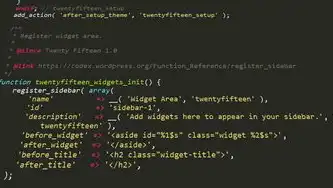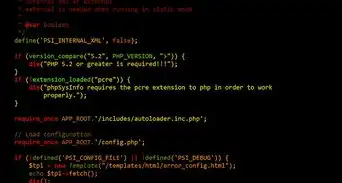PHP Smarty 是一款非常流行的模板引擎,它允许开发者将逻辑代码和展示层分离,从而提高开发效率和代码的可维护性,本篇文章将深入探讨 PHP Smarty 的基本概念、安装配置以及在实际项目中的应用。
在Web开发中,模板引擎是一种强大的工具,可以帮助开发者实现代码复用,简化视图层的设计,同时保持业务逻辑和表现层的分离,PHP Smarty 作为一款成熟的模板引擎,凭借其简洁的语法和丰富的功能,深受广大开发者的喜爱。

图片来源于网络,如有侵权联系删除
PHP Smarty 概述
1 什么是Smarty?
Smarty 是一个开源的模板引擎,主要用于PHP应用程序,它通过将HTML结构和PHP代码分开,使得页面更加清晰易懂,同时也提高了页面的可读性和可维护性。
2 Smarty的工作原理
Smarty 通过定义特定的标记来嵌入PHP代码到HTML文档中,这些标记由Smarty自动替换为相应的值或执行相应的函数。
{$variable}
这个标记会被替换为变量 variable 的值。
3 Smarty的优势
- 代码分离:将逻辑代码和展示层分离,便于团队协作和维护。
- 易于扩展:提供了大量的内置函数和插件,可以轻松地进行定制和扩展。
- 性能优化:支持缓存机制,可以显著提升网站的响应速度。
安装与配置
1 安装Smarty
我们需要从官方网站下载Smarty的最新版本,假设我们下载了Smarty 4.x版本的压缩包,我们可以使用以下命令进行解压:
tar -zxvf smarty-4.x.tar.gz cd smarty-4.x
我们将Smarty的目录复制到项目的根目录下:
cp -r * /path/to/your/project
我们在项目中创建一个Smarty实例:
require_once '/path/to/your/project/libs/smarty/smarty.php'; $smarty = new Smarty();
2 配置Smarty
在Smarty实例中,我们可以设置一些基本的配置参数,如模板路径、编译路径等:
$smarty->template_dir = '/path/to/your/project/templates/'; $smarty->compile_dir = '/path/to/your/project/templates_c/'; $smarty->config_dir = '/path/to/your/project/configs/'; $smarty->cache_dir = '/path/to/your/project/cache/';
还可以启用缓存以加快渲染速度:

图片来源于网络,如有侵权联系删除
$smarty->caching = true; $smarty->cache_lifetime = 3600; // 缓存时间为1小时
Smarty的基本用法
1 创建模板文件
我们需要创建一个模板文件(通常以.tpl,index.tpl:
<html>
<head><title>{$title}</title></head>
<body>
<h1>Welcome to {$website_name}!</h1>
<p>Here is some information about our company:</p>
<ul>
{foreach item=info from=$company_info}
<li>{$info.name}: {$info.description}</li>
{/foreach}
</ul>
</body>
</html>
在这个例子中,我们使用了Smarty的 标记来插入变量 和数组 $company_info 的内容。
2 渲染模板
在控制器或视图文件中,我们可以使用Smarty的 display() 方法来渲染模板:
$smarty->assign('title', 'Welcome Page');
$smarty->assign('website_name', 'My Website');
$smarty->assign('company_info', [
['name' => 'CEO', 'description' => 'John Doe'],
['name' => 'CTO', 'description' => 'Jane Smith']
]);
$smarty->display('index.tpl');
这段代码将把 、website_name 和 company_info 变量传递给模板,并在浏览器中显示最终的页面。
Smarty的高级特性
1 使用自定义函数
Smarty 提供了许多内置函数,但有时我们可能需要自定义自己的函数,这可以通过 registerPlugin() 方法来实现:
$smarty->registerPlugin('function', 'my_function', 'my_custom_function');
然后在模板中使用 {my_function} 来调用自定义函数。
2 使用模板继承
Smarty 支持模板继承,这意味着我们可以创建一个父模板,并在子模板中重写部分内容:
<!-- parent.tpl -->
<html>
<head><title>{$title}</title></head>
<body>
{include file="header.tpl"}
{block name="content"}{/block}
{include file="footer.tpl"}
</body>
</html>
<!-- child.tpl -->
{extends file="parent.tpl" /}
{block name="content"}
<h2>This is a child template content.</h 标签: #php smarty 网站源码



评论列表